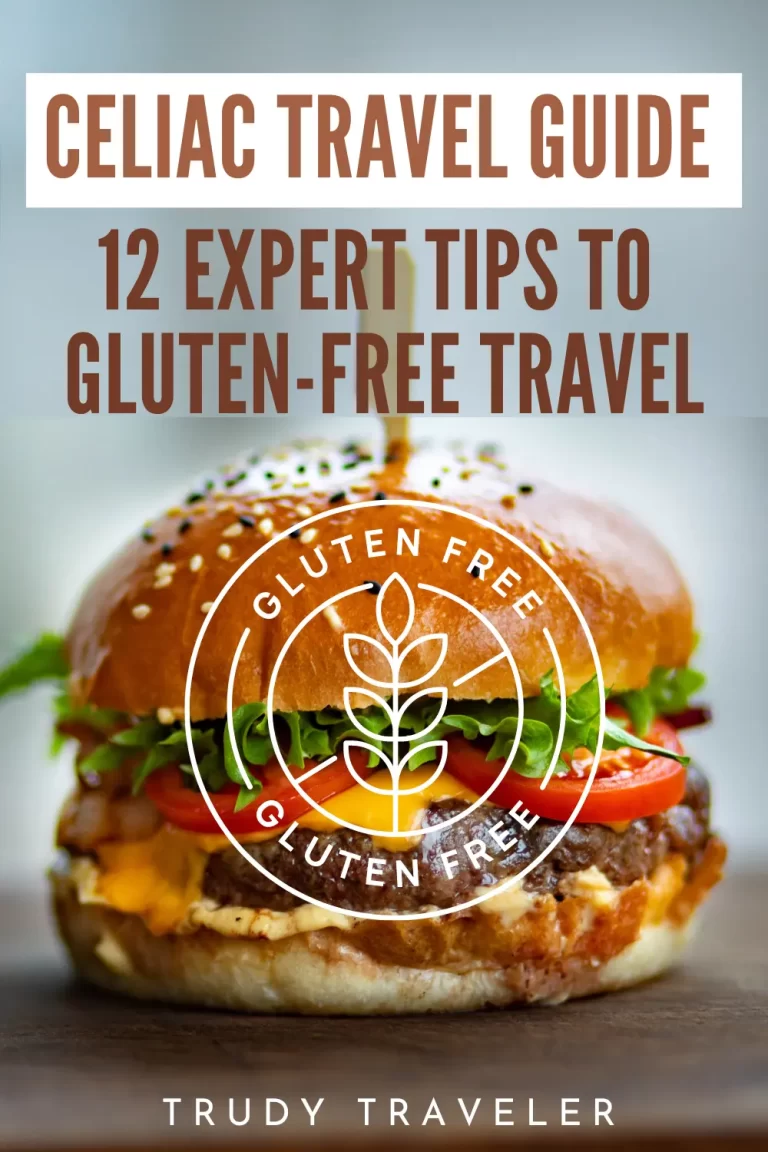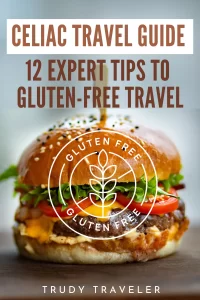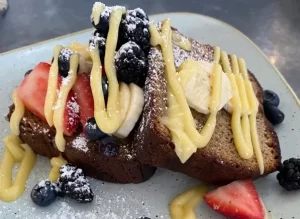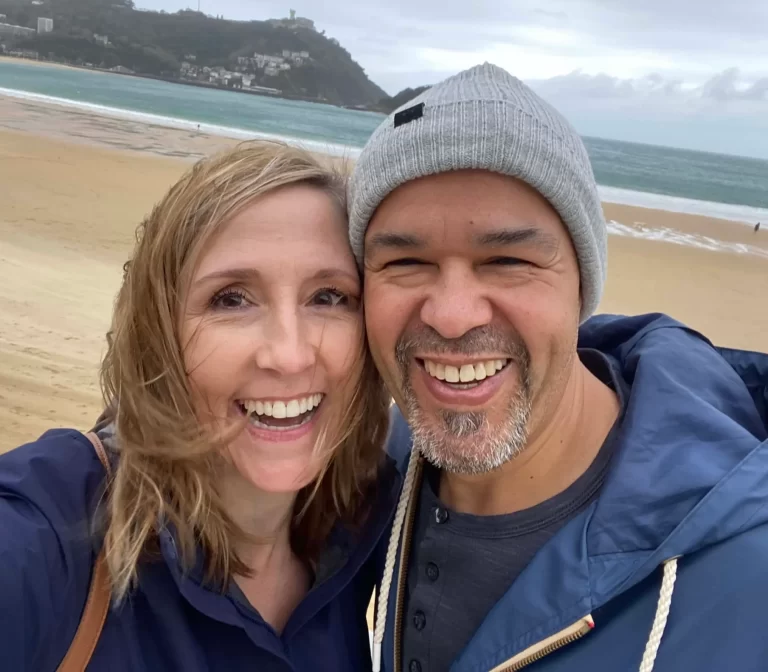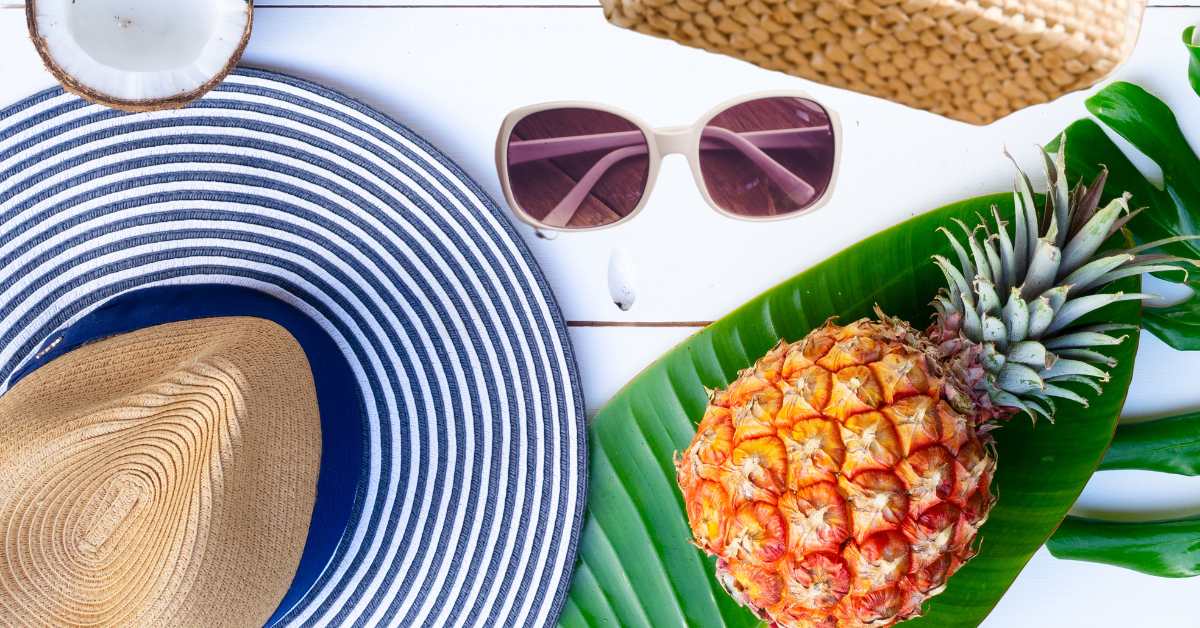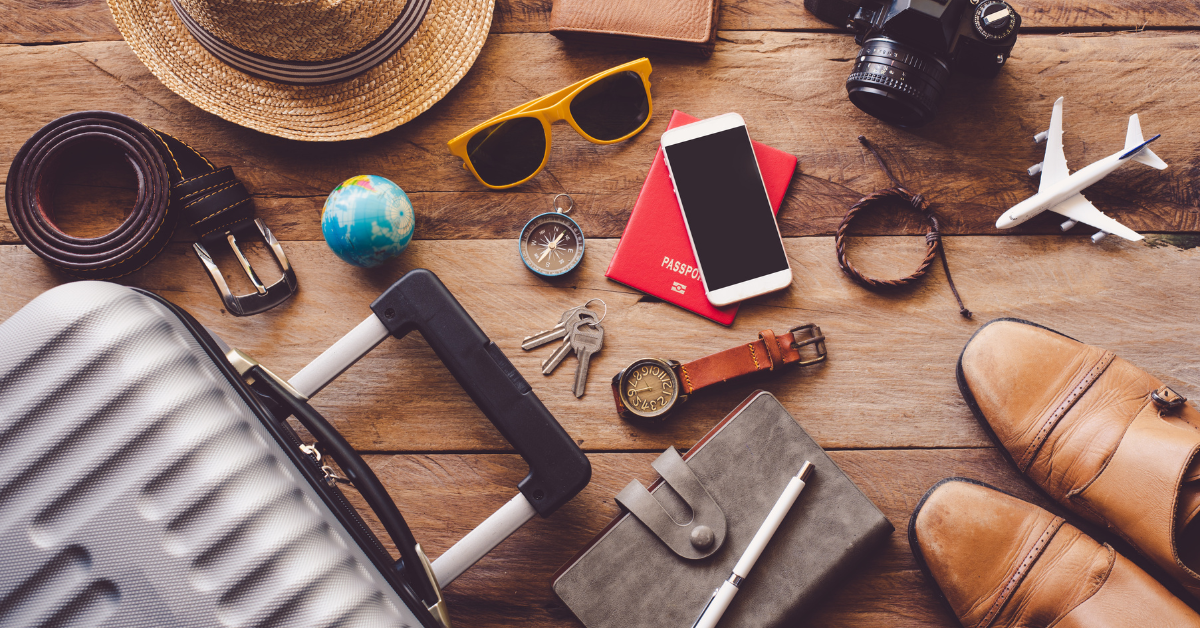Gluten-free travel can be frustrating; however, traveling with celiac disease can be navigated with careful planning and smart strategies. Learn how to dine gluten-free wherever you go. Don’t let celiac disease hold you back from exploring new destinations. Check out our expert tips for traveling gluten-free and embark on unforgettable adventures worry-free!
Friends, this post contains affiliate links. This means, if you make a purchase from a link on this website, I earn a commission, with absolutely no added cost to you. For more information click here.
CeliacTravel Guide:
12 Expert Tips for Gluten-Free Travel
Research Gluten-Free Travel Options

One of the best tips for gluten-free travel, is doing research ahead of time. Look for restaurants with gluten-free menus or that accommodate dietary restrictions.
It’s important to call ahead or have multiple options available. Recently, while in Spain, we found numerous restaurants and bakeries that were highly recommended by other travelers, and that Google showed as open, although upon arrival we found they were either temporarily or permanently closed.
Not All Gluten-Free Options Are Equal
This looks different depending on where you go. For example, in the states “gluten-free options” often means dishes are intentionally prepared gluten-free. However, I have found particularly in Europe, when a restaurant reports it has “gluten-free options”, it is referring to dishes that are naturally gluten-free such as salads.
Despite the potential for limited options, most restaurants who truly cater to a gluten-free customer have quality options.
Required Allergen Disclosures
Before traveling to Spain and Ireland, I had heard that it’s easy to eat gluten-free. This may not be someone else’s experience; however, except for higher-end restaurants, I’ve generally found limited options.
On a good note for those Celiac travelers, Europe has strict allergen disclosure regulations for food products. This regulation requires clear and comprehensive labeling or disclosure of allergens to ensure that consumers, including those with allergies or intolerances, can access accurate information about the ingredients in the products they purchase.
I appreciate this disclosure. However, that does not mean restaurants intentionally prepare dishes with gluten-free ingredients; as mentioned previously, they are often referring to naturally gluten-free dishes. That’s where packing snacks comes in handy.
Pay Attention to Gluten-Free Symbols

Some countries mark items on their menu that are gluten-free, while other countries indicate items that contain wheat. This makes it essential to understand what the symbols represent.
Communicate Dietary Needs
One of the safest celiac travel tips, is informing staff about your gluten-free requirements. Clear communication upfront helps ensure a safer dining experience and allows restaurants to share how they can accommodate your dietary needs. I have found that resorts like you to share dietary restrictions directly to their food manager or chef to ensure your needs are accommodated safely.
Honestly, I get tired of asking questions, double-checking, clarifying what gluten-free includes, and explaining cross-contamination. However, this is the most essential strategy for staying healthy.
Assuming restaurants understand is risky and, in my experience, does not end well. In addition, I always include that gluten and cross-contamination will make me sick, and when the server brings my food, I always confirm that it was prepared gluten-free.
As much as I dislike repeatedly having the same conversation, I dislike my stomach hurting every day for several weeks or months even more.
Gluten-Free Travel: All-Inclusive Resorts
I have had several uncomfortable experiences at all-inclusive resorts because of incorrect signage related to gluten-free items. Just because they ask about food allergies does not mean your server understands the needs of a celiac traveler. I have walked through multiple buffets that list items as gluten-free, but I can see that they are not. Also, gluten-free does not mean cross-contamination-free.
My best experience at resorts is asking to talk to the chef or food manager, who will ensure your food is prepared safely. In my experience, they are happy to make you gluten-free meals that are safe from cross-contamination.
Although it may feel like a hassle, I’ve found it is better to have a conversion instead of being sick for days, weeks, or months after your vacation. Unfortunately all of these things have happened to me.
Be Selective Where You Eat
One of the downsides of gluten-free travel is that you are limited to what you can try. Unfortunately, it isn’t safe for you to eat at the local taco shop and, in most cases, to eat street food.
Friends, learn from my mistakes and self-talk, “Oh, it will be fine…”, “These people are so nice, I don’t want to inconvenience them,” etc. Believe me, it is NEVER worth it. I’d guess I have moderate-level side effects from gluten, and I can’t imagine what it is like for those who have more severe reactions.
Gluten-Free Travel Prep: Pack Gluten-Free Snacks
Bring a stash of gluten-free snacks to have on hand during your travels. Having snacks available can be especially helpful when gluten-free options are limited. I always bring snacks like Chomps, Kind Bars, Lily’s chocolate, gluten-free crackers and jerky. I’ve linked all my favorites in case you’re interested.
Trudy Tip: In destinations such as Mexico, I have found tortilla chips, although made from corn, are not cooked in a dedicated gluten-free fryer. Great news! You have options if you are tired of being left out of that delicious salsa or guacamole. You can always pack some gluten-free tortillas or crackers in your bag and then ask for a separate bowl of salsa or guacamole so there’s no cross-contamination.

Celiac Travel Card
If traveling where language barriers may exist, consider carrying a Celiac travel card explaining your gluten-free needs in the local language. Travel cards are an excellent strategy for celiac travelers to convey our dietary restrictions more effectively.
At times, I’ve found smaller restaurants are unaware that eating gluten-free can be more than an issue with wheat or don’t understand concerns with cross-contamination.
A Celiac travel card came in handy when we were in Thailand. It was helpful to share the card with our server if I had concerns they didn’t understand what I was trying to say.
My husband speaks Spanish fluently, and even with speaking the language, he often has to clarify what we mean by “gluten” and explain cross-contamination.
In preparation for your next trip, Celiac Travel has translation cards available in 63 languages. Click here for our Spanish Gluten-Free/Celiac Travel Card.
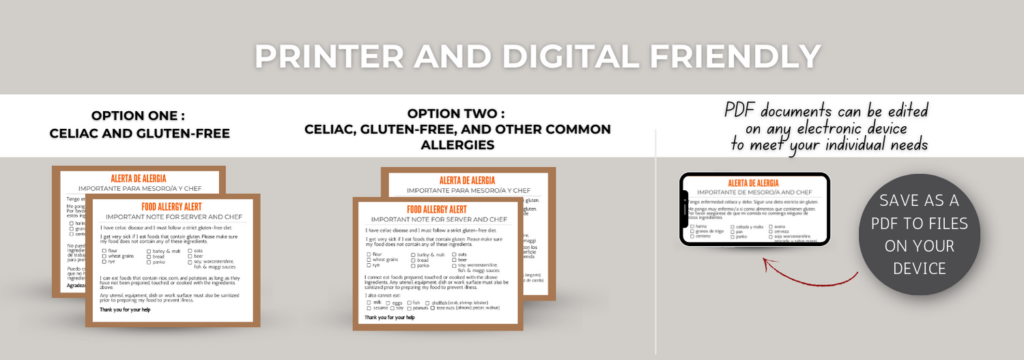
BYOGF (Bring Your Own Gluten-Free Snacks)
To ensure you have safe food options available to you, consider bringing some gluten-free staples. These gluten-free items could include gluten-free bread, snacks, or other non-perishable items safe for your dietary needs. I find gluten-free staples are crucial when traveling internationally, especially if we plan to prepare our own meals.
On road trip getaways where we plan to prepare our own meals, we often bring a tote with some essential cookware such as a frying pan, toaster and cutting board to minimize the risk of cross-contamination. We’ve also brought our own sponges and kitchen towels just to be safe. Unrelated to food, I also bring gluten-free soap and shampoo because I react to those also.
Trudy Tip: The MyTSA app clarifies what items you can bring on the plane or carry in your checked luggage. Before I started using this app, I had a brand new, unopened (and, of course, expensive) container of all-natural peanut butter confiscated when going through security. It pays to check the app before you fly.
Find where you like, what you like, and stick with it.
Eating at the same place may seem boring for some people, but I’d rather eat something multiple times, knowing I won’t get sick, instead of taking a risk, and not feeling well the rest of the trip.
Just in case...

Sometimes, even with the best preparation and communication, you get “glutened.” I always travel, hoping for the best but prepared for the worst.
I have two go-to aids for healing and relief. In most cases, activated charcoal, in combination with a lot of water, helps minimize the impact of ingesting gluten and speed up healing.
I’ve also found Reed’s Ginger Chews are great for relieving stomach irritation. I buy them in bulk and have them with me everywhere I go. Two of these ginger chews usually do the trick. I’ve tried other brands, but these are the only ginger chews that make a difference.
Traveling with celiac disease is easier and safer with smart strategies. Prioritize your health, savor every moment, and don’t let celiac disease hinder your travel.
Let me know in the comment section below if you’ve tried any of our tips or if you have others to add to the list.
If you want more learn more about gluten-free travel, check out 10 Great Tips that Every Gluten-Free Traveler Needs to Know Before Flying.
Don’t forget to follow Trudy Traveler on PINTEREST, and you can save the pin for later!

